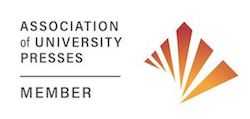Lewis Carroll and "Alice" on Stage
The Savile Clarke Letters
Edited by Clare Imholtz
- Summary
- Reviews
- Author Bio(s)
In August 1886, Lewis Carroll (Charles Lutwidge Dodgson) received a letter asking permission to dramatize Alice’s Adventures in Wonderland and Through the Looking-Glass. This book presents and annotates 103 letters from Carroll to the playwright Henry Savile Clarke (of which six are to Savile Clarke’s daughters). Carroll tells Savile Clarke in detail exactly what he would like to see in the stage performance. Savile Clarke wrote the script for the first full dramatization of the Alice books, which was staged at the Prince of Wales’s Theatre in London in 1886–87, and revived at the Globe Theatre, also in London, in 1888–89. This is the largest body of focused Carroll correspondence to which we have access. It is deeply revealing of Carroll’s personality and his relationship to his most brilliant writings, the two Alice books. The book includes a posthumous essay, “Lewis Carroll in the Wings,” by the eminent Carroll biographer Morton N. Cohen. The book also includes supplementary materials on British theatre in the late Victorian period and the child-acting controversy.
- Summary
- Reviews
- Author Bio(s)
In August 1886, Lewis Carroll (Charles Lutwidge Dodgson) received a letter asking permission to dramatize Alice’s Adventures in Wonderland and Through the Looking-Glass. This book presents and annotates 103 letters from Carroll to the playwright Henry Savile Clarke (of which six are to Savile Clarke’s daughters). Carroll tells Savile Clarke in detail exactly what he would like to see in the stage performance. Savile Clarke wrote the script for the first full dramatization of the Alice books, which was staged at the Prince of Wales’s Theatre in London in 1886–87, and revived at the Globe Theatre, also in London, in 1888–89. This is the largest body of focused Carroll correspondence to which we have access. It is deeply revealing of Carroll’s personality and his relationship to his most brilliant writings, the two Alice books. The book includes a posthumous essay, “Lewis Carroll in the Wings,” by the eminent Carroll biographer Morton N. Cohen. The book also includes supplementary materials on British theatre in the late Victorian period and the child-acting controversy.
QuickLinks
Find a BookFor Our AuthorsRights and PermissionsRotunda Digital ImprintSupport UVA PressCareer OpportunitiesWalker Cowen Memorial PrizePrivacy PolicyContact Us
- P.O. Box 400318 (Postal)
- Charlottesville, VA 22904-4318
- 210 Sprigg Lane (Courier)
- Charlottesville, VA 22903-2417
- 434 924-3468 (main)
- 1-800-831-3406 (toll-free)
- 434 982-2655 (fax)

the future
of publishing
Affiliates



